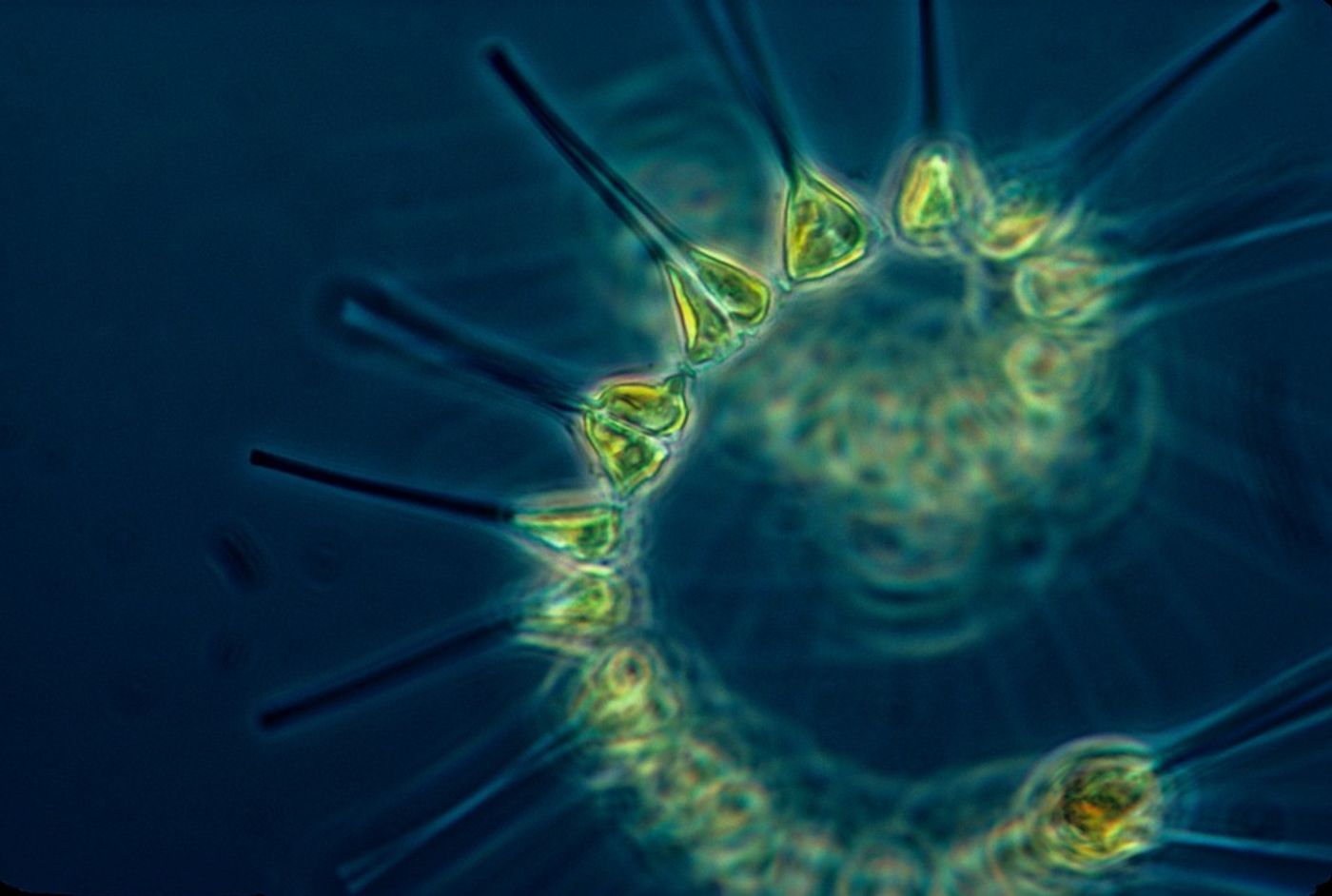The fluid dynamics of pelagic snails' movement
Warm water pelagic snails don’t get much attention, but they certainly should. The snails move between ocean surface waters at night where they feed to their daytime sleeping quarters several hundred meters below the ocean’s surface, tucked away from hungry predators. This movement has been little studied because of the impossibilities of keeping pelagic snails in a laboratory setting. But now oceanographers and engineers have teamed up to analyze the fluid dynamics of these tiny species, citing their importance in global geochemical cycles.
Animals with calcium carbonate shells such as pelagic snails play a significant role in cycling carbon. Estimates report that the sinking of calcium carbonate shells to the ocean floor and their subsequent dissolution accounts for up to 12-13% of global carbonate flux. Hence, though they may be little, pelagic snails like the sea butterfly have a disproportionately large impact on atmospheric carbon and consequential ocean acidification.
In the video above, you can see images of the movements of tropical marine snails that the team filmed. They wanted to look at the animals’ movements from both a fluid physics and an ecological perspective. To do so, they used a low magnification, high-speed stereophotogrammetry system capable of capturing the swimming and sinking movements of nine warm water pelagic snail species (seven thecosomes, one gymnosome, and one heteropod).
"We wanted to answer how the swimming behavior of these beautiful animals is affected by their different shell shapes and sizes. We found that species with a shell-shaped like an airplane wing swims faster and is more maneuverable than those with 'snail-like' coiled shells. Understanding the swimming ability of these animals is helping us better understand their ecological importance and distribution in the ocean. Further, as engineers, we hope to learn from the swimming style of these organisms to design a new generation of bio-inspired underwater vehicles," says corresponding author Dr. David Murphy, Assistant Professor at the Department of Mechanical Engineering of the University of South Florida, Tampa, Florida.
In recognizing the different physiology of the animals, the researchers found unique functionality in each species’ movement patterns, with shell shape (coiled, elongated, or round), body size, ad presence of flapping "wings" greatly influencing speed.
"We conclude that the swimming and sinking behavior of these pelagic snails corresponds strongly with shell shape and size. Tiny snails with coiled shells swim more slowly whereas larger snails with bottle-shaped or wing-shaped shells swim faster because their larger sizes allow them to overcome the effects of water viscosity. However, swimming speed does not correlate with how far these animals migrate each day, which suggests that light and temperature levels and the presence of predators and prey also play a role. We also found that the sea butterfly with the wing-shaped shell uses its shell to 'hang-glide' downwards in order to slow its sinking," says Murphy.
The researchers estimate that these species travel 50-300 meters on their daily vertical commutes, a task which takes them 1-3.7 hours every day. Aside from this amazing migration feat, the researchers say that the snails’ movements are visually breathtaking.
"It's absolutely mesmerizing to watch these tiny, delicate animals flap their wings in really complex motions in order to essentially fly through the water. We're lucky to have high-speed cameras that can slow down this motion enough for us to see it. And it's stunning to think that these sea butterflies are using the same fluid dynamics principles to fly through water that insects use to fly through the air," exclaims Murphy.
Sources: FRONTIERS IN MARINE SCIENCE, EUREKA ALERT









